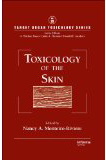Dr. Nancy A. Monteiro-Riviere
 Director Emeritus
Director Emeritus
Degrees
1972-76 B.S. Biology (Cum Laude), Stonehill College North Easton, MA
1976-79 M.S. (Anatomy & Cell Biology), Purdue University West Lafayette, IN
1979-81 Ph.D. (Anatomy & Cell Biology), Purdue University West Lafayette, IN
1982-84 Postdoc (Toxicology) Chemical Industry Institute of Toxicology (CIIT) Research Triangle Park, NC
Contact
Bio
Dr. Nancy A. Monteiro-Riviere, is a Regents Distinguished Research Scholar and University Distinguished Professor of Toxicology and Director, of the new Nanotechnology Innovation Center of Kansas State (NICKS). She was a Professor of Investigative Dermatology and Toxicology at the Center for Chemical Toxicology Research and Pharmacokinetics, North Carolina State University (NCSU) for 28 years.
She is also a Professor in the Joint Department of Biomedical Engineering at UNC-Chapel Hill/NCSU and Research Adjunct Professor of Dermatology, at UNC- Chapel Hill School of Medicine. She has a B.S. (cum laude) in Biology from Stonehill College, North Easton, MA and M.S. and Ph.D. in Anatomy and Cell Biology from Purdue University, West Lafayette, IN and completed a postdoctoral fellowship in toxicology at Chemical Industry Institute of Toxicology (now Hamner Institutes for Health Sciences) in Research Triangle Park, NC. She was past-President of both the Dermal Toxicology and In Vitro Toxicology Specialty Sections of the National Society of Toxicology.
Dr. Monteiro-Riviere is a Fellow in The Academy of Toxicological Sciences, and in the American College of Toxicology. She was the recipient of the Purdue University inaugural Distinguished Women Scholars Award, Kansas State University Woman of Distinction, and elected to attend the National Academy of Sciences special Keck Futures Initiative Conference on "Designing Nanostructures at the Interface Between Biomedical and Physical Systems".
She serves as Associate Editor for Wires Nanomedicine and Nanobiotechnology and for Materials Science and Engineering C: Materials for Biological Applications; and serves on the Editorial Boards of Nanomedicine, Nanotoxicology, Journal of Applied Toxicology, Cutaneous and Ocular Toxicology, Research and Reports in Transdermal Drug Delivery, and Toxicology in Vitro.
She has served on several national and international expert review panels, including many in nanotoxicology, such as the National Research Council of the National Academies Committee to Review the Federal Strategy to Address Environmental, Health, and Safety Research Needs for Engineered Nanoscale Materials and the International Council on Nanotechnology. She has served as an invited expert for the National Nanotechnology Initiative on Nanomaterials.
She has given more than 160 invited presentations and published over 300 manuscripts in the field of skin toxicology and nanotoxicology and is Editor of three books; "Nanotoxicology: Characterization and Dosing and Health Effects", "Toxicology of the Skin - Target Organ Series", and "Nanotoxicology: Progress toward Nanomedicine, 2nd Edition". Her current research interests involve in vivo and in vitro studies of skin absorption, penetration and toxicity of chemicals, nanoparticles, development of novel scaffolds for tissue engineering and novel pharmaceutical drug delivery devices.
 This key volume of the Target Organ Toxicology Series provides a fresh and modern approach to the subject of skin toxicology from the perspective of how the skin forms a barrier that protects the body from the external environment and how chemicals and drugs interact with the barrier properties of the skin. Any defects or perturbations to this barrier may result in damage to the skin or may alter absorption.
This key volume of the Target Organ Toxicology Series provides a fresh and modern approach to the subject of skin toxicology from the perspective of how the skin forms a barrier that protects the body from the external environment and how chemicals and drugs interact with the barrier properties of the skin. Any defects or perturbations to this barrier may result in damage to the skin or may alter absorption. Nanomaterials - structures with characteristic dimensions between 1 and 100 nm -exhibit a variety of unique and tunable chemical and physical properties that have made engineered nanoparticles central components in an array of emerging technologies. The use of nanotechnology is increasing; however its potential adverse effects on human health are not well understood. In order to accurately conduct hazard assessments, scientists need to understand the broad concepts that apply to pathways of dermal, oral, and respiratory exposure.
Nanomaterials - structures with characteristic dimensions between 1 and 100 nm -exhibit a variety of unique and tunable chemical and physical properties that have made engineered nanoparticles central components in an array of emerging technologies. The use of nanotechnology is increasing; however its potential adverse effects on human health are not well understood. In order to accurately conduct hazard assessments, scientists need to understand the broad concepts that apply to pathways of dermal, oral, and respiratory exposure.